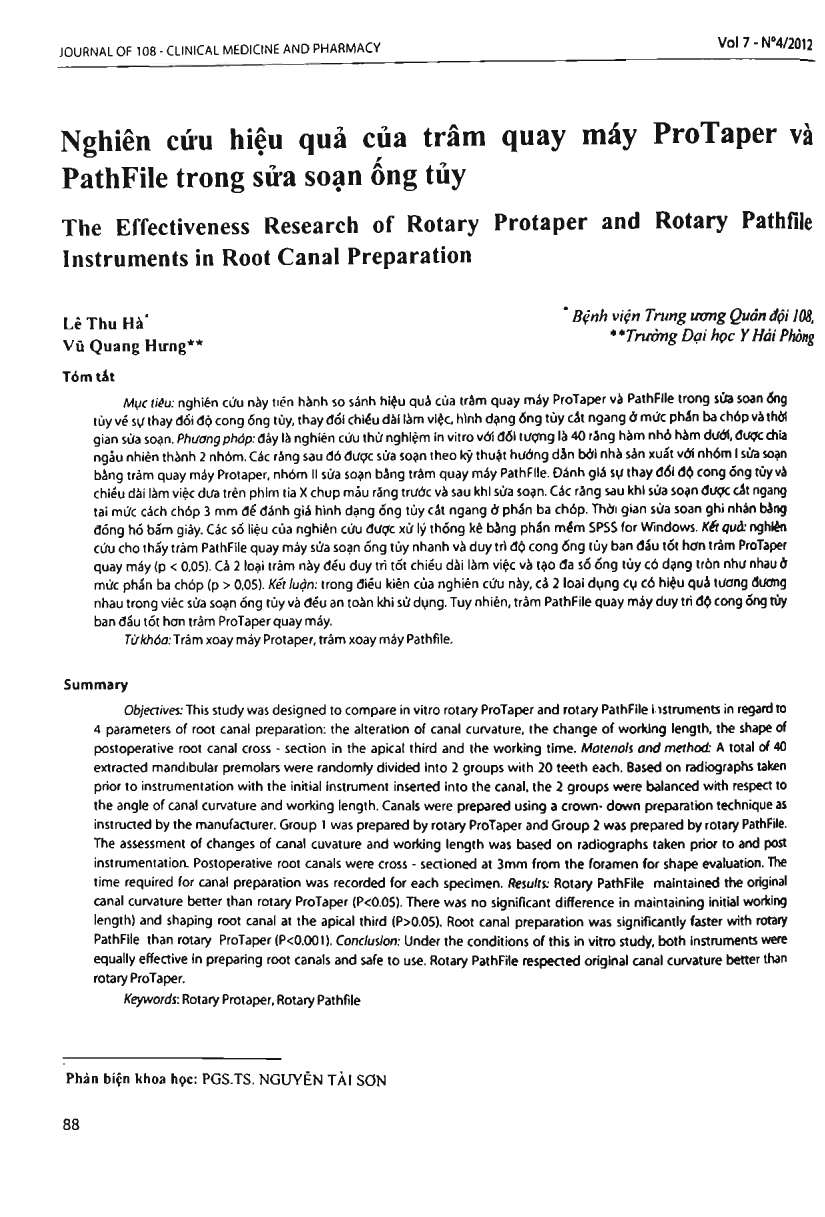
Objectives: This study was designed to compare in vitro rotary ProTaper and rotary Path File instruments in regard to 4 parameters of root canal preparation: the alteration of canal curvature, the change of working length, the shape of postoperative root canal cross-section in the apical third and the working time. Materials and method: A total of 40 extracted mandibular premolars were randomly divided into 2 groups with 20 teeth each. Based on radiographs taken prior to instrumentation with the initial instrument inserted into the canal, the 2 groups were balanced with respect to the angle of canal curvature and working length. Canals were prepared using a crown-down preparation technique as instructed by the manufacturer. Group 1 was prepared by rotary ProTaper and Group 2 was prepared by rotary Path File. The assessment of changes of canal cuvature and working length was based on radiographs taken prior to and post instrumentation. Postoperative root canals were cross - sectioned at 3mm from the foramen for shape evaluation. The time required for canal preparation was recorded for each specimen. Results: Rotary Path File maintained the original canal curvature better than rotary ProTaper (p0.05). There was no significant difference in maintaining initial working length) and shaping root canal at the apical third (p0.05). Root canal preparation was significantly faster with rotary Path File than rotary ProTaper (p0.001). Conclusion: Under the conditions of this in vitro study, both instruments were equally effective in preparing root canals and safe to use. Rotary Path File respected original canal curvature better than rotary ProTaper.
- Đăng nhập để gửi ý kiến
